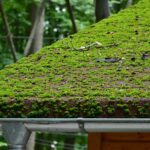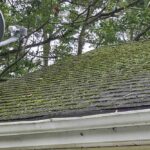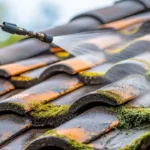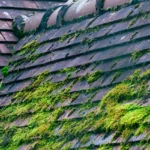Preparing for the rains involves more than just umbrellas and raincoats. Your home’s roof, the first line of defense against the elements, needs special attention too. Understanding the importance of roof maintenance before the rainy season is crucial in preventing leaks, water damage, and costly repairs.
A well-maintained roof not only safeguards your home but also enhances its value and longevity. Implementing a strategic maintenance plan ensures that your roof is in optimal condition to handle the deluge.

The Importance of Roof Maintenance
An effective maintenance routine ensures the longevity and performance of your roof, keeping your home safe from moisture and water damage. Regular upkeep helps in identifying issues early, saving costly repairs in the long run.
Understanding the Lifecycle of Your Roof
Every roof has a lifespan, and understanding this helps in planning regular maintenance. Depending on materials and weather conditions, roofs can last from 20 to 50 years. Periodic checks are vital to sustain durability.
Potential Damages from Ignoring Maintenance
Neglecting roof maintenance can lead to significant issues such as leaks, mold growth, structural damage, and energy inefficiency. Early identification and repair prevent these problems from escalating.
Steps for Roof Maintenance Before Rainy Season
To prepare your roof effectively for the rainy season, follow these crucial steps to ensure its durability and performance.
1. Conduct a Thorough Inspection
Begin with a comprehensive inspection to identify visible damages, such as missing or damaged shingles, debris buildup, and gutter issues. Check for signs of wear around chimneys, vents, and skylights.
2. Clean Gutters and Downspouts
Clogged gutters can cause water to back up, leading to leaks. Clean your gutters and downspouts to ensure proper water flow. Make sure they are securely fastened to handle heavy rain.
3. Address Roof Leaks Promptly
Any identified leaks should be addressed immediately to prevent further damage. Consult a professional for roof inspection if leaks seem serious.
4. Trim Overhanging Branches
Trees with branches over the roof can cause damage during storms. Trim these branches to avoid debris buildup and potential hazards.
5. Check and Repair Flashings
Inspect flashings around chimneys, vents, and other openings. Ensure they are intact and seal any gaps to prevent water intrusion.
Choosing Professional Help
While some maintenance tasks can be done by homeowners, hiring professionals ensures thorough inspections and repairs. Roof specialists have the expertise to handle intricate repairs and offer maintenance packages.
When to Call a Professional
If you detect severe damage or extensive wear during your inspections, contact a roof maintenance expert for professional advice and solutions.
Long-Term Benefits of Regular Roof Maintenance
Investing in routine maintenance not only extends your roof’s lifespan but also preserves its aesthetic value and energy efficiency, reducing your home’s overall operating costs.
Cost Savings from Early Detection
Identifying minor issues before they escalate leads to significant cost savings on repairs and replacements in the long term.
Improved Home Value
A well-maintained roof enhances your home’s curb appeal and value, offering a worthwhile return on investment if selling.

Frequently Asked Questions
1. How often should I inspect my roof?
It’s recommended to inspect your roof bi-annually and after severe weather conditions.
2. What are the signs of a leaking roof?
Visible signs include water stains on ceilings, missing shingles, and mold growth in the attic.
3. Can roof maintenance be a DIY task?
Basic tasks like cleaning gutters can be DIY, but significant repairs should be handled by professionals for safety and quality assurance.
Proper roof maintenance before the rainy season is an investment in your home’s safety and value. For more detailed guidance, visit our roof maintenance guide.
This article contains affiliate links. We may earn a commission at no extra cost to you.








